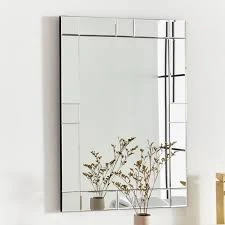

The Versatility and Elegance of Float Glass Mirrors
Float glass mirrors have become a staple in modern design, seamlessly blending functionality with aesthetics. These mirrors are created using a method called float glass production, a technique that yields high-quality glass with a perfectly flat surface. This process involves floating molten glass on top of molten tin, allowing it to cool and form a smooth, uniform surface. The result is ideal for mirrors, as the reflections produced are crystal clear and free from distortion.
The popularity of float glass mirrors can be attributed to their versatility. They can be used in various settings, from residential homes to commercial spaces. In residential settings, they are often found in bathrooms, bedrooms, and hallways. Homeowners appreciate the way a well-placed mirror can enhance a room's ambiance, make spaces feel larger, and reflect light to create a brighter environment. Additionally, decorative mirrors can serve as striking focal points, adding style and personality to interior décor.
In commercial environments, float glass mirrors are commonly used in retail stores, hotels, gyms, and salons. They not only serve practical purposes, allowing customers to check their appearance, but they also contribute to the overall ambiance of the space. A strategically placed mirror can create an illusion of depth, making narrow spaces feel wider and more inviting. In salons and spas, mirrors can enhance the experience, providing a polished and sophisticated atmosphere.

Beyond aesthetic appeal, float glass mirrors are also valued for their durability and ease of maintenance. The surface of float glass is resistant to scratches and stains, making it a practical choice for high-traffic areas. Cleaning is straightforward; a simple mixture of soap and water is often enough to keep mirrors looking pristine. Unlike some other reflective materials, float glass is less prone to tarnishing or clouding, thereby ensuring long-lasting clarity.
Moreover, advancements in technology have led to the development of smart mirrors that incorporate features such as LED lighting, touch controls, and even integrated displays for information or entertainment. These innovations showcase the potential of float glass mirrors to enhance our daily routines. Imagine a bathroom mirror that lights up automatically when you approach or one that displays the news, weather, or your calendar while you prepare for your day. Such features can elevate the mirror from a simple reflective surface to a multifunctional device that meets our modern needs.
As sustainability becomes a growing concern, manufacturers of float glass mirrors are also making strides in environmentally friendly practices. New production methods are being developed to minimize waste and energy consumption, contributing to more sustainable building practices.
In conclusion, float glass mirrors are not just practical accessories; they are multifaceted elements of design that add depth, light, and elegance to any space. Whether in a home or a commercial establishment, they provide both beauty and functionality, making them an essential element in contemporary interiors. As technology continues to evolve, the possibilities for float glass mirrors are bound to expand, offering even more innovative uses that can transform our interaction with these everyday objects.